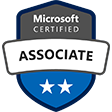- PA-213: Palo Alto Networks Firewall Install, Configure, and Manage (EDU-201)
- PA-212: Palo Alto Networks Firewall Configure Extended Features (EDU-205)
- PA-215: Palo Alto Networks Firewall Essentials FastTrack
- PA-232: Palo Alto Networks Panorama Manage Multiple Firewalls (EDU-221)
- PA-242: Palo Alto Networks Firewall Manage Cyberthreats (EDU-231)
- PA-243: Palo Alto Networks Firewall Debug and Troubleshoot (EDU-311)
Are you looking for a Cisco Training Course?
Your organization needs qualified professionals who can design, implement, and operate Cisco multiprotocol internet works. With Cisco training from TechNow, you can gain the knowledge and experience your organization needs to succeed.
TechNow’s Cisco Training and Certification Career Path takes students from the fundamentals of networking through a complete line of Cisco courses designed to give students the knowledge and experience they need to master Cisco networking skills in a fast, thorough, and efficient manner.
Our Cisco training courses will prepare you for your work towards Cisco certification. With years of experience in the Cisco training environment, TechNow can lead you through a dynamic experience to prepare you for Cisco certification.
A list of our Cisco Courses.
- N-305: CCNA Bootcamp
- N-310: CCNA Extended Bootcamp
- N-315: Cisco Secure Virtual Private Networks
- N-325: Implementing Cisco IOS Network Security (IINS)
- N-405: ROUTE-Implementing Cisco IP Routing
- N-415: Implementing and Operating Cisco Enterprise Network Core Technologies (ENCOR)
- N-425 : Implementing Cisco Enterprise Advanced Routing and Services ( ENARSI)
- N-455: Securing Networks with ASA Fundamentals (SNAF)
- N-485: In-Depth Securing Networks with Cisco Firepower Threat Defense NGFW
- N-495: Voice-over IP (VoIP) Foundations
- N-515: Implementing Cisco Enterprise Wireless Networks (ENWLSI)
- N-595: VoIP Security Analysis and Design
- TN-865: Wireshark Network Traffic and Security Analysis
Here are the Information Privacy Protection course offerings:

Course Overview:
Learn how a Modern Desktop Administrators deploys, configures, secures, manage, and monitors devices and client applications in an enterprise environment. This is a hands-on, instructor led Bootcamp focusing on the real world responsibilities of a Modern Desktop Administrator and covering the information needed for the certification exams, which are administered while attending.
If you’ve passed Exam 70-698: Configuring Windows 10 (retired March 31, 2019) you only need to take MD-101 to earn this new certification.
This certification is one of the workload administrator certification required for the Microsoft 365 Certified: Enterprise Administrator Expert certification.
Dates/Locations:
No Events
Duration: 10 Days
Course Content:
-
- Module 01. Installing Windows
- Module 02. Updating Windows
- Module 03. Post-Installation Configuration and Personalization
- Module 04. Configuring Peripherals and Drivers
- Module 05. Configuring Networks
- Module 06. Configuring Storage
- Module 07. Managing Apps in Windows 10
- Module 08. Configuring Authorization & Authentication
- Module 09. Configuring Data Access and Usage
- Module 10. Configuring Advanced Management Tools
- Module 11. Supporting the Windows 10 Environment
- Module 12. Troubleshooting the Windows OS
- Module 13. Troubleshooting Files & Applications
- Module 14. Troubleshooting Hardware and Drivers
- Module 15. Planning an Operating System Deployment Strategy
- Module 16. Implementing Windows 10
- Module 17. Managing Updates for Windows 10
- Module 18. Device Enrollment
- Module 19. Configuring Profiles
- Module 20. Application Management
- Module 21. Managing Authentication in Azure AD
- Module 22. Managing Devices and Device Policies
- Module 23. Managing Security
Prerequisites:
-
-
- Microsoft 365 Certified Fundamentals (M-MS900)
-
Target Audience:
IT professionals who perform installation, configuration, general local management and maintenance of Windows 10 core services. Candidates may also be familiar with enterprise scenarios and cloud-integrated services.
Comments
Latest comments from students
Liked the class? Then let everyone know!
Course Overview:
This hands-on training course builds your skills in the VMware ViewTM suite of products: VMware View Manager, VMware View Composer, and VMware® ThinAppTM. Based on customer specification, this course can be based on View 4.x or 5.x, and ThinApp 4.x or 5.x releases.
Attendees to VM-325: VMware View: Install, Configure and Manage will receive TechNow approved course materials and expert instruction.
At the end of this course, you should understand the features and operations of View and be able to:
- Install and configure View components
- Create and manage dedicated and floating desktop pools
- Deploy and manage linked-clone virtual desktops
- Configure and manage desktops that run in local mode
- Configure secure access to desktops through a public network
- Use ThinApp to package applications
Date/Locations:
No Events
Duration: 5 days
Course Objectives:
- Module 1: Course Introduction
- Module 2: Introduction to VMware View
- Module 3: View Connection Server
- Module 4: View Desktops
- Module 5: View Client Options
- Module 6: View Administratory
- Module 7: Configuring and Managing Linked Clones
- Module 8: Local-Mode Desktops
- Module 9: Command-Line Tools and Backup Options
- Module 10: Managing VMware View Security
- Module 11: View Manager Performance and Scalability
- Module 12: VMware® ThinAppTM
Prerequisites:
- VM-315: VMware Infrastructure: Install, Configure and Manage
- Experience in Microsoft Windows Active Directory Administration
- Experience with VMware vSphereTM
- Before attending the course, students must be able to perform the following tasks:
- Create a template in VMware vCenterTM Server and deploy a virtual machine from it
- Modify a template customization file
- Open a virtual machine console in vCenter Server and access the guest operating system
- Configure Active Directory services
Comments
Latest comments from students